How can your trading mentor help you with Trademetria

I am living proof that training and mentorship are two of the most important pillars to becoming a profitable trader. When I tried to learn by myself back in 2001, I lost $10k and 3 years trying. When I joined a prop firm that offered training, mentorship, top tools and traders to talk to, I had 44 profitable months out of 48. Big difference.
There are many trading schools out there and while they can teach you how to trade, few of them offer mentorship. Mentorship is the most important component of a trading school because most of us would agree that trading is 10% strategy and 90% psychology. You can take a $5k course and learn the most profitable strategy in the world, but who is going to help you with the other 90%? Trading psychology can't just be a chapter of a course, it is an ongoing discovery experience because you only discover your problems when trading, not when taking a course. A mentor can identify these problems and solve them faster before they become bad habits.
One tool mentors use to identify trading problems is a trading journal. Mentors look at your trading history just like accountants look at business numbers or doctors look at blood samples. Understanding how you are making or losing money allows you to know what works, what doesn't and how to make more money.
Let's practice by looking at some real trading results from a trading journal.
Best and worst trading instruments
The photo below shows the trader's best and worst instruments for a given month. What can you tell from it?

An easy answer would be to stop trading the worst stocks right. However, an experienced mentor will not only tell you to delete these stocks, but will tell your most profitable stock is a waste of time. KWK was traded 33 times and the trader made $7.20 per trade. Seens like a waste of time to me. STJ has a much better $ per trade ($33.66) and definitely should be kept on your list. On the other hand, BX, NRG, PPL should be scratched as the trader traded them many times and clearly does not understand how these stocks move. VIP had only one trade and can be kept, if desired. This report should be run on a monthly basis to keep your trading list updated with the most profitable stocks and to allow proper time to trade and learn them.
Pnl distribution
The chart below shows gross and net profits. What recommendation would you make to this trader?
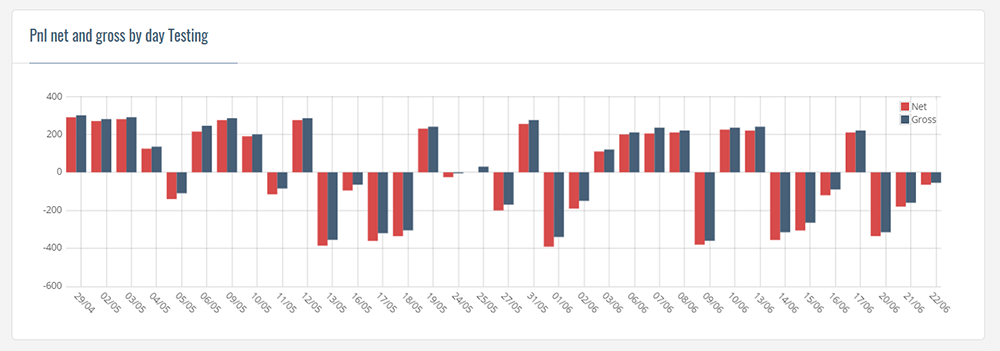
Up days are smaller than losing days. I'd recommend cutting daily losses at $200. This rule would save the trader almost $2k. Yes, traders could lose $1000 and make it all back, but most of the times, they don't or they dig their holes deeper. Having a daily limit is one of the golden rules in risk management and the chart tells you where it needs to be.
Key metrics evaluation
What can you tell about these trading metrics below?
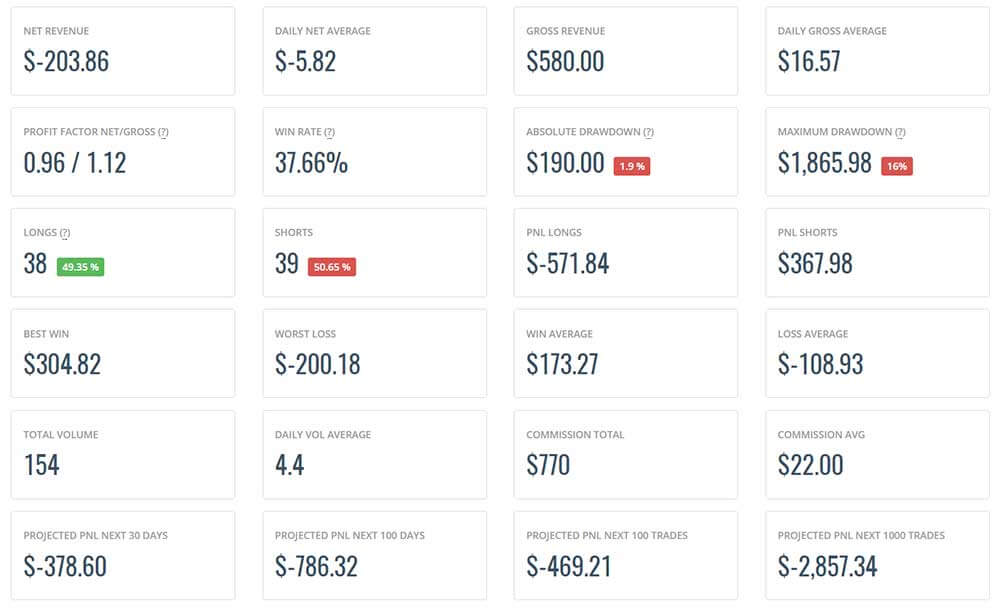
You might not understand all the metrics above, but your mentor will not only understand them, but will also tell you what to improve. In the example above, the trader has a profit factor of just 0.96 meaning almost breaking even. The recommendation here is to allow winning trades to work longer while cutting losses quickly. A profit factor of 1 means that you make $345 in one trade, but lose $345 on another one. Ideally, the trader should strive for a 3 to 1 ratio or a profit factor of 3. For example, trader makes $300 per trade, but loses $100 per trade. Your mentor will tell you what profit factor you should aim for depending on your trading style.
Can you notice anything else that is more disturbing than a bad profit factor?
Look at the pnl of longs vs pnl of shorts. The trader has traded longs just as much as shorts, but loses money going long and makes money going short. The recommendation here is to trade big when going short and reducing positions when going long or not going long at all. This single adjustment would make the trader profitable right away.
Intraday trading patterns
The chart below is from one of my real days back in 2010. It is a chart of intraday pnl over time. The red line is the accumulative pnl and the blue line is pnl per trade.
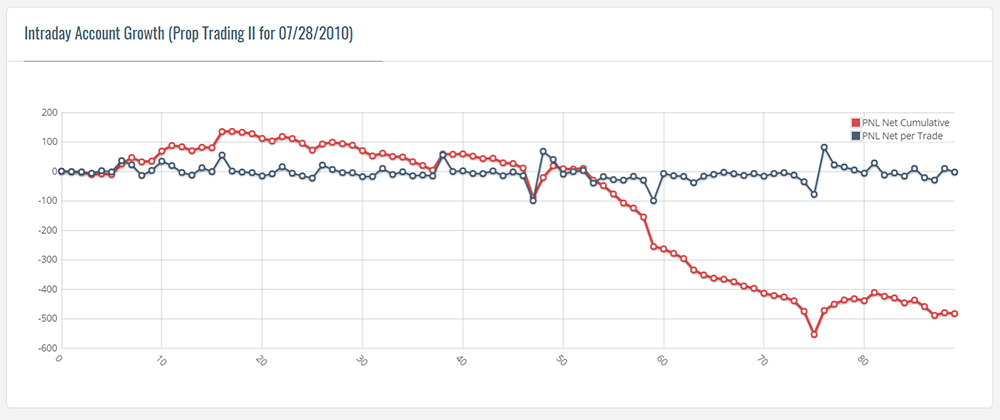
I made some money in the morning and lost a lot more in the afternoon. This was a rare day for me, but for many traders especially beginners, it could be a pattern that is hard to recognize and accept. A mentor can spot this pattern early and make a few recommendations like making you stop after reaching your daily goal in the morning, allowing you to lose only 20% from your max pnl, or take a break after a losing streak.
Strategy rankings & best times to trade
There are other reasons to use a trading journal even if you don't have a mentor. The picture below shows results ranked by strategy.
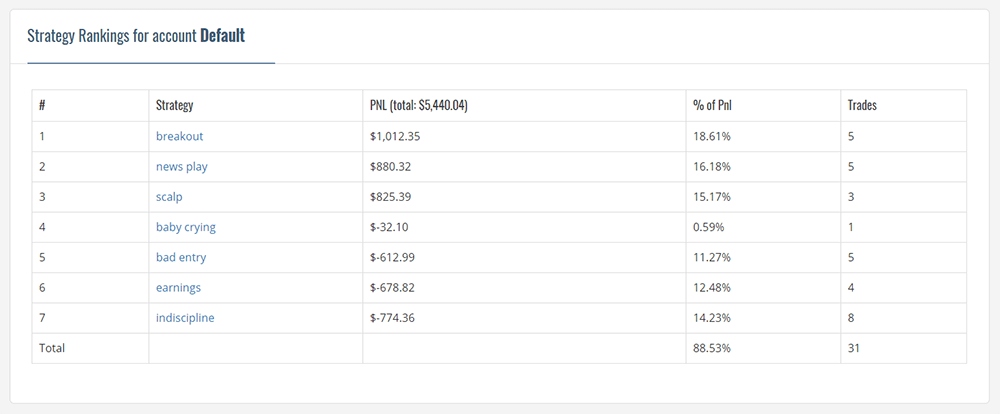
By knowing what strategy works, you can trade them with more confidence. You can also use it to test new strategies.
Below, results ranked by time and day of the week.
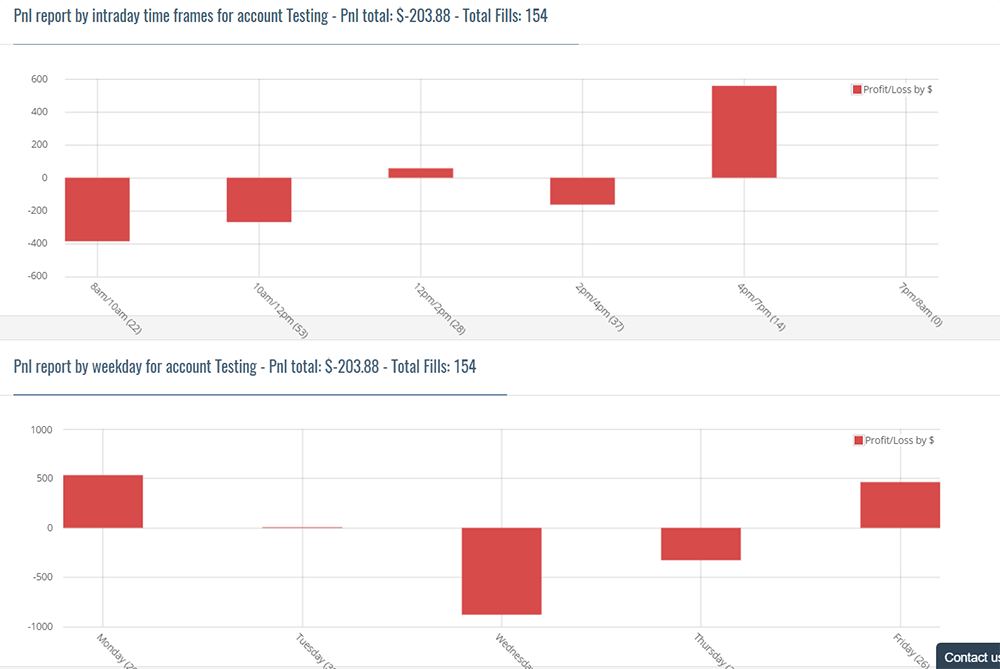
Conclusion
Hopefully, these examples show you that it is always important to let someone more experienced look at your trading history. Your doctor look at your blood tests to spot diseases, why wouldn't you let a pro trader look at your trading history too?
Your trading history provides solid evidence of what you are doing right and wrong.
At Trademetria, mentors can see their students results in one central place and interact with them. Mentors stay on top of their students results, and students learn faster by not making mistakes that can be quickly spotted through the system.
If you don't have anyone to look at your trading history, Warrior Trading is one company that can help you. Their traders post real results and you know you are dealing with pros that make money and can teach you.
If you need a trading journal, discover how Trademetria can help you for less than $1 a day.